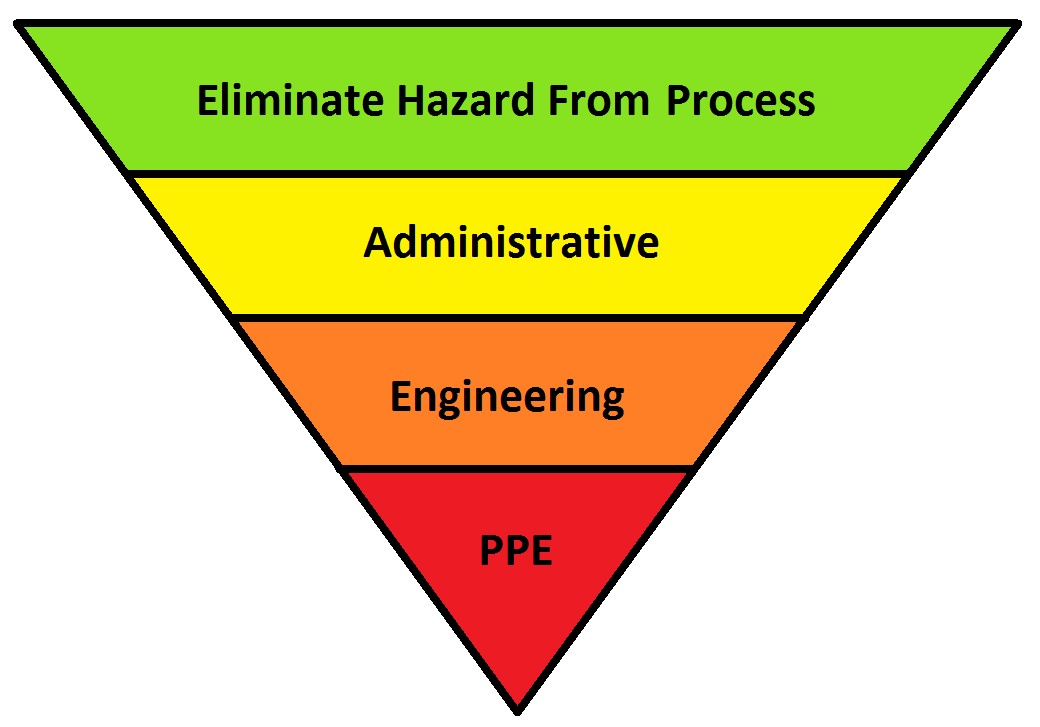Safety Controls
Safety controls are steps that can be taken to reduce the risk associated with a hazard. These steps are categorized into three or four levels of effectiveness. The most effective safety control is to remove the hazard completely by substituting it with another less hazardous material or technique. If this is not possible, then a combination of administrative controls, engineering controls, and PPE must be selected to reduce the risk to acceptable levels.

Figure 1 - Conceptual diagram of the effectiveness and applicability of the types of safety controls
Elimination/Substitution of Hazards
The most effective way to ensure control a risk is to remove hazards from your workplace all together. This method should be used whenever possible. In lieu of removing the hazard, the source of the hazard may be substituted with another material which performs the same purpose, but does not have the accompanying hazard. For example, it is often possible to substitute one solvent for another, such as substituting toluene for the more hazardous benzene.
When substituting, be sure that a new hazard is not introduced. When changing any step of a procedure, it is important to revisit the hazard assessment to identify any new hazards that may be present and to select appropriate controls.